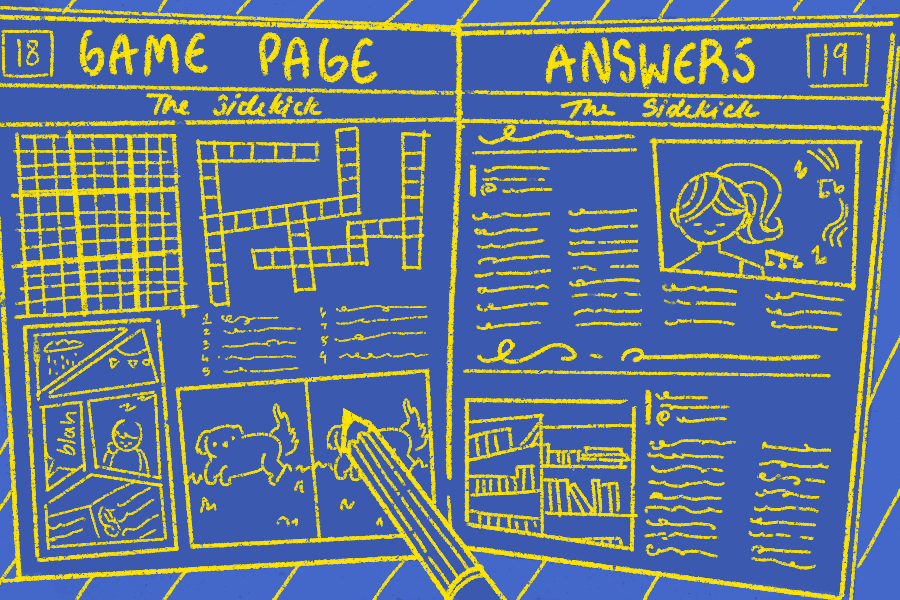By Jordan Thompson
Staff Writer
Cartoons of the 90’s-dead and gone
The 1990s were a time for really great cartoons. “Rugrats”, “SpongeBob SquarePants”, “The Wild Thornberrys”, “Ed, Edd n Eddy” and “Hey Arnold!” are still remembered vividly today by students in high school-but where did they all go and why?
And what is it about present day cartoons that just are not the same?
While SpongeBob has hung in there the longest being that it is the only cartoon from the 90s that (every so often) comes out with a new episode, it is roughly the same show it was eight years ago. Stephen Hillenburg left as director in 2005 after finishing the The SpongeBob SquarePants Movie, and took all of his witty humor and epic plots with him.
“It’s not that I am too old for cartoons,” senior Julie Miller said. “Old SpongeBob episodes make me laugh just as much as ‘The Big Bang Theory’ does, but there is something different about new SpongeBob episodes.”
The rise of technology can be seen in just about every new cartoon, including the new and improved SpongeBob. Companies have switched from traditional cel animation and resorted to digital animation because it is cheaper and more efficient meaning they can make episodes more quickly. The use of digital animation has resulted in more vibrant colors, perfectly symmetrical character models and smoother animation and has allowed HD widescreen. For example, SpongeBob looks very different in episodes from the early 2000s such as ‘Rock Bottom’ and ‘Nature Pants’ than he does now.
But what about the other cartoons-why have they not at least been remastered?
And why has the humor in SpongeBob changed if it was so widely appreciated?
Researchers report that 4-year-olds who had just watched “SpongeBob SquarePants” did worse on tests of attention and problem solving than young children who watched a slower-paced educational program or spent time drawing.
The study, which appeared in the Sept. 12 issue of the journal Pediatrics, involved 60 children whose parents reported similar levels of television-watching and attention skills. The children were randomly assigned to one of three groups: one watched nine minutes of the cartoon, another viewed nine minutes of the educational program “Caillou” and the remaining group spent the time with drawing paper, markers and crayons.
Shows like SpongeBob and “Ed, Edd n Eddy” began to gain attention from parents who felt that they were ‘inappropriate’ to children as well as detrimental to their learning ability. However some students at CHS who grew up with the cartoons advocate otherwise.
Senior Joe Han grew up watching cartoons such as “Hey Arnold!”, “Rugrats” and SpongeBob to better his English.
“Today’s cartoons have more slap-stick humor and lack depth,” Han said. “Nineties cartoons had better humor that made you think.”
Not only was the humor more appealing, but it is also argued that the shows helped expand imagination.
“SpongeBob had an entire episode about imagination and I can still remember it perfectly,” senior Alex Bureau said. “It still makes me laugh even today and I swear that show and Cat Dog made me a more creative kid.”
While cartoons such as “Rugrats” and “The Wild Thornberrys” never faced much dispute by parents, they were the ends to an era. As technology has evolved, so have the motives of children channels. More cartoons these days are geared to educate, and the ones that are not still tend to have weaker humor.
“I can’t stand cartoons these days, and neither can my little sister who is seven,” Miller said.
Six seniors were asked if they would still watch the cartoons that they grew up with if they were played more often, and all of them said yes. Both Miller and senior Hayden Henry said that they sometimes watch the cartoons on Netflix.
If you are one of the many young adults who still love to laugh at SpongeBob SquarePants and Patrick Star’s friendship or the quirkiness of Eliza Thornberry’s dad, Nigel, perhaps investing in Netflix would be the right thing to do.








